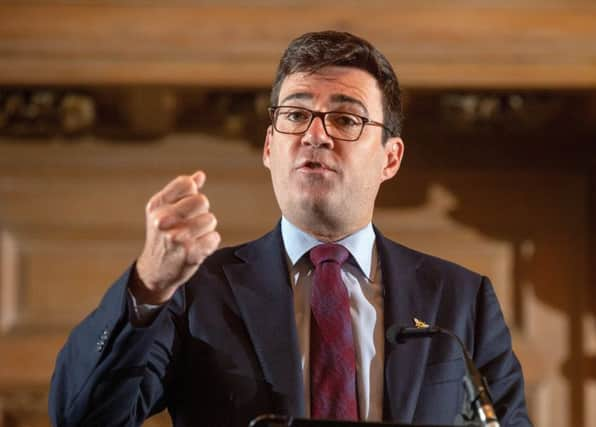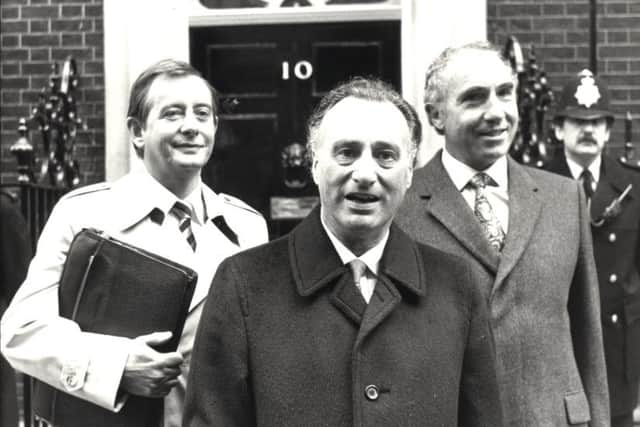Chris Grayling’s red yellowbrick roads only seem to head southwards – David Behrens


A spider’s web of red and blue lines across the country, it looks like a diagram of the human circulatory system, except that most of the arteries go to the big toe.
Advertisement
Hide AdAdvertisement
Hide AdThis is the country’s so-called Major Roads Network, a new piece of red tape that wraps up the trunk routes managed by the Government and the A-roads which local councils maintain.


The red lines represent the latter – but only those designated as funding priorities. A disproportionate number snake south-westwards to the fashionable little resorts that make up the Cornish Riviera.
Advertisement
Hide AdAdvertisement
Hide AdThe Cotswolds and the south coast are similarly well connected. North Yorkshire, on the other hand, is about as plugged in as an electric car left out in the snow.
Yorkshire is the only county with two National Parks, but just a single road between them is coloured red – the one from Thirsk to Malton, via Pickering.
The East Riding is similarly bereft. The new network skirts its boundaries but only one route, between York and Hull, dissects it.
These, then, are Mr Grayling’s red yellowbrick roads. The rest are dead-ends; they aren’t even on the map.
Advertisement
Hide AdAdvertisement
Hide AdThe creation of the network – which is new only in the administrative sense; the roads themselves have been there for decades – has been curiously opaque. The map was released to local authorities last year but did not become public until later. This led some to wonder how it had been drawn up, and the best clue I have found is contained within a 1981 script for the BBC comedy, Yes, Minister.
Its co-writer, the late Sir Antony Jay, was close to government and had a knack of getting uncomfortably close to the truth, but he sugar-coated it with humour to make it look as if it was something he’d made up.
He had his Minister, Jim Hacker, wonder aloud why two good roads had been built to Oxford before any were laid to the major ports.
“Nearly all our permanent secretaries went to Oxford,” says his own secretary. “And most Oxford colleges give very good dinners.”
Advertisement
Hide AdAdvertisement
Hide AdThe same source has it that the Cabinet Office allowed those new roads to be built only if it could also have a motorway to take Ministers hunting in the shires. That’s why, when the M1 was being planned in the 1950s, it stopped in the middle of Leicestershire.
It’s hard not to conclude that Whitehall’s self-serving system is intact. How else can the abandonment of large swathes of the rural North be explained or justified?
The new network does bring some benefits: the narrow A65, through Ingleton on the fringe of the Dales, is included, as is the series of bottlenecks between York to Scarborough known as the A64 – although there is no sign of it being widened, despite new demands this week from five local MPs.
Elsewhere, it is very obvious that the priorities lie elsewhere. The further south you go, the thicker and more concentrated the arteries.
Advertisement
Hide AdAdvertisement
Hide AdAll of this sits uncomfortably with the rhetoric at last week’s symposium in Leeds to consider the first report from the independent UK2070 commission into the country’s regional inequalities.
Andy Burnham, the Manchester metro mayor and former Chief Secretary to the Treasury, put it best. The disparity could only be corrected, he said, by putting the North at the front of the queue for investment for the next 25 years.
The Major Roads Network illustrates just how far off-message the complacent Department for Transport still is. Its concentration on cities points to a second disparity, too – the one that discriminates against rural economies fighting to remain viable.
No one argues that areas with the most concentrated populations should not receive the lion’s share of public funding. But there is no logic to justify the prioritisation of the rural South over the rural North. If the roads to Bude and Newquay can be declared “important”, so can the ones to Whitby and Northallerton.
The one crumb of comfort is that those places will at least be spared the bother of having to entertain Government officials on their jollies.